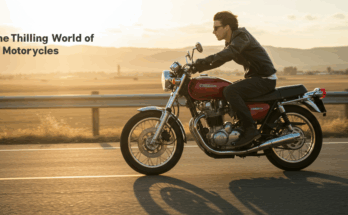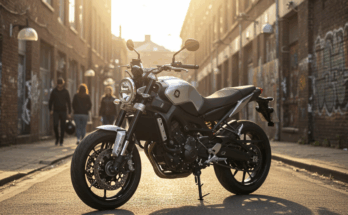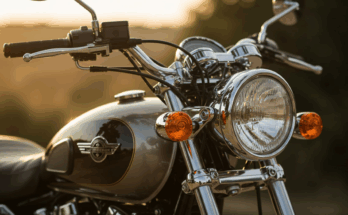Riding a motorcycle is more than just a mode of transport; it’s a lifestyle that blends freedom, adrenaline, and cutting-edge technology. In 2025, motorcycles and smartphones are converging to create an unparalleled riding experience, with bikes boasting advanced connectivity and phones acting as the ultimate riding companions. Whether you’re a weekend cruiser or a daily commuter, choosing the right motorcycle and smartphone can elevate your journey. This article dives into the best motorcycles and smartphones for 2025, focusing on their tech features, performance, and how they complement each other to enhance your ride. Let’s explore the perfect synergy of two-wheeled power and mobile innovation.
Motorcycles: The Best Rides for 2025
The motorcycle industry in 2025 is pushing boundaries with smarter, faster, and more connected machines. Below, we review three standout models that combine performance with tech-forward features, ideal for riders who value innovation as much as the thrill of the open road.
Yamaha YZF-R1M: Precision Meets Connectivity
The Yamaha YZF-R1M remains a legend in the superbike category, and its 2025 iteration takes things up a notch. Powered by a 998cc inline-four engine, it delivers a blistering 200 horsepower, making it a track beast and a road warrior. What sets this bike apart is its tech suite: a 6-axis IMU (Inertial Measurement Unit) adjusts traction control, slide control, and engine braking in real-time, ensuring razor-sharp handling. The R1M’s smartphone integration via Yamaha’s Y-Connect app allows riders to monitor performance metrics, adjust suspension settings, and even track maintenance schedules from their phone. Its sleek carbon-fiber bodywork and aerodynamic fairings not only look stunning but also reduce drag for high-speed stability.
For riders, the R1M’s appeal lies in its blend of raw power and digital finesse. Imagine syncing your phone to the bike’s TFT display, receiving navigation prompts, and analyzing lap times after a track day—all without leaving the saddle. However, the $26,000 price tag and aggressive riding position may deter casual riders. Still, for those chasing performance and tech, the R1M is a masterpiece.
Indian FTR Rally: Retro Vibes with Modern Tech
The Indian FTR Rally is a love letter to retro-inspired riders who crave modern functionality. Its 1,203cc V-twin engine pumps out 120 horsepower, offering a punchy yet manageable ride for urban and off-road adventures. The 2025 model introduces a touchscreen display with Bluetooth connectivity, letting riders pair their smartphones for calls, music, and GPS navigation. The bike’s Ride Command system also supports over-the-air updates, ensuring your motorcycle stays current with the latest software. With knobby tires and a higher ground clearance, the FTR Rally is built for versatility, tackling gravel paths as easily as city streets.
What makes the FTR Rally shine is its balance of style and substance. The retro scrambler aesthetic—think round headlight and exposed engine—pairs beautifully with practical tech like USB charging ports for your devices. Priced at around $14,500, it’s a compelling option for riders who want a bike that looks cool, rides smoothly, and keeps them connected. The only downside? Its fuel range is modest at 150 miles per tank, so long-distance riders may need to plan refueling stops.
BMW R 1300 GS: The Ultimate Adventure Machine
For those who dream of cross-country journeys, the BMW R 1300 GS is the adventure bike to beat in 2025. Its 1,300cc boxer engine produces 145 horsepower, paired with a suite of rider aids like adaptive cruise control, lane-change assist, and a radar-based collision warning system. The bike’s 12.3-inch full-color display integrates seamlessly with BMW’s Connected app, allowing riders to customize riding modes, track routes, and even share ride data with friends. The GS’s adjustable suspension adapts to varying terrains, making it equally at home on highways or rugged trails.
The R 1300 GS feels like a command center on two wheels. Picture this: you’re navigating a winding mountain pass, your phone securely mounted, displaying turn-by-turn directions while the bike’s dynamic suspension smooths out every bump. At $19,000, it’s a premium investment, but its versatility and tech make it worth every penny. The only catch is its weight—over 500 pounds—which may challenge less experienced riders in tight situations.

Smartphones: The Perfect Riding Companions
A great motorcycle deserves a great smartphone to unlock its full potential. In 2025, smartphones are more than just communication devices; they’re navigation hubs, performance trackers, and entertainment systems for riders. Here are three top smartphones that pair perfectly with today’s connected motorcycles.
Samsung Galaxy S25 Ultra: The All-in-One Powerhouse
The Samsung Galaxy S25 Ultra is a rider’s dream, combining a stunning 6.9-inch AMOLED display with IP68 water and dust resistance—perfect for unpredictable weather on the road. Powered by the Snapdragon 8 Gen 4 processor, it handles navigation apps, music streaming, and bike connectivity apps like Yamaha’s Y-Connect or BMW’s Connected without breaking a sweat. Its 50MP quad-camera system is a bonus for riders who love capturing scenic routes, while the 5,000mAh battery ensures you won’t run out of juice mid-ride. The S Pen is a handy tool for quick notes, like jotting down a fuel stop or a roadside diner recommendation.
Mount the S25 Ultra on your handlebars, and you’ve got a vibrant, glove-friendly display for GPS and real-time bike telemetry. Its 5G connectivity ensures fast data transfer for live traffic updates, and Samsung’s Knox security keeps your data safe. At $1,300, it’s a premium device, but its durability and performance make it ideal for riders who demand the best.
Google Pixel 9 Pro: AI-Driven Navigation
The Google Pixel 9 Pro stands out for its AI-powered features, making it a fantastic choice for riders who rely on navigation. Its 6.7-inch OLED display is bright enough for daylight use, and the Tensor G4 chip optimizes apps like Google Maps for seamless, real-time routing. The Pixel’s integration with Google Assistant lets you control music, answer calls, or check weather conditions hands-free via voice commands—a lifesaver when you’re wearing a helmet. The 48MP camera captures crisp photos and videos, perfect for documenting your rides.
What sets the Pixel 9 Pro apart is its software. Google’s AI enhances route planning by predicting traffic patterns and suggesting alternate paths, which is invaluable for long-distance riders. Priced at $1,000, it’s a more affordable option than the S25 Ultra, though its battery life (4,700mAh) is slightly less robust. For riders who prioritize navigation and smart features, the Pixel 9 Pro is a game-changer.
OnePlus 13: Speed and Affordability
For budget-conscious riders, the OnePlus 13 offers flagship performance at a lower price point—around $900. Its 6.8-inch AMOLED display with a 120Hz refresh rate ensures smooth visuals, whether you’re checking GPS or streaming music. The Snapdragon 8 Gen 4 processor matches the S25 Ultra’s performance, and the 6,000mAh battery outlasts most competitors, making it ideal for all-day rides. The OnePlus 13’s fast-charging capability (100W wired) means you can top up during a quick coffee break.
The OnePlus 13’s OxygenOS is lightweight and responsive, perfect for running multiple apps like navigation, music, and bike telemetry without lag. Its IP67 rating ensures it can handle dust and rain, and the 50MP triple-camera system captures decent ride footage. While it lacks the advanced AI of the Pixel 9 Pro, its speed and battery life make it a practical choice for riders who want reliability without breaking the bank.
How Motorcycles and Smartphones Work Together
The magic happens when you pair a tech-savvy motorcycle with a powerful smartphone. Modern bikes like the Yamaha R1M, Indian FTR Rally, and BMW R 1300 GS feature Bluetooth or Wi-Fi connectivity, allowing seamless integration with smartphones. Apps like Yamaha’s Y-Connect, Indian’s Ride Command, or BMW’s Connected let you control navigation, monitor bike performance, and even receive maintenance alerts. Smartphones act as dashboards, displaying speed, fuel levels, and route data in real-time.
For example, pairing a Samsung Galaxy S25 Ultra with the BMW R 1300 GS lets you mirror navigation onto the bike’s display while keeping your phone secure in a waterproof mount. The Google Pixel 9 Pro’s AI can optimize routes for the Indian FTR Rally, suggesting scenic detours for weekend rides. Even the budget-friendly OnePlus 13 can handle the Yamaha R1M’s telemetry app, letting you fine-tune settings on the go. This synergy enhances safety, convenience, and enjoyment, making every ride a connected adventure.
Tips for Choosing Your Motorcycle and Smartphone Combo
Selecting the right motorcycle and smartphone depends on your riding style and needs. Here are some tips to guide your decision:
- Consider Your Riding Environment: Urban commuters may prefer the Indian FTR Rally for its agility and the OnePlus 13 for its affordability. Long-distance adventurers should lean toward the BMW R 1300 GS and the Samsung Galaxy S25 Ultra for their durability and advanced features.
- Prioritize Connectivity: Ensure your motorcycle and smartphone support compatible apps. Check if the bike’s connectivity suite (e.g., Yamaha Y-Connect) works with your phone’s OS (Android or iOS).
- Think About Durability: Choose a smartphone with an IP67 or IP68 rating to withstand dust, rain, and vibrations. Use a sturdy phone mount designed for motorcycles.
- Test Battery Life: Long rides demand long-lasting batteries. The OnePlus 13’s 6,000mAh battery is a standout, while the BMW R 1300 GS’s USB ports can keep your device charged.
- Balance Budget and Features: If you’re on a budget, the Indian FTR Rally and OnePlus 13 offer great value. For premium performance, the Yamaha R1M or BMW R 1300 GS paired with the Samsung Galaxy S25 Ultra is worth the investment.
FAQ
What makes a motorcycle “tech-savvy” in 2025?
A tech-savvy motorcycle features advanced connectivity like Bluetooth or Wi-Fi, smartphone integration apps, and rider aids such as traction control, adaptive cruise control, or collision warnings. Examples include the Yamaha YZF-R1M’s Y-Connect app and the BMW R 1300 GS’s radar-based safety systems.
Can I use any smartphone with a motorcycle’s connectivity features?
Most modern smartphones with Android or iOS can pair with motorcycle connectivity systems, but compatibility varies. Check if the bike’s app (e.g., Indian Ride Command) supports your phone’s operating system before purchasing.
Are budget smartphones like the OnePlus 13 good enough for riding?
Yes, budget smartphones like the OnePlus 13 offer excellent performance, long battery life, and durability (IP67 rating), making them suitable for navigation and bike connectivity. However, they may lack advanced AI features found in premium models like the Google Pixel 9 Pro.
How do I ensure my smartphone is safe while riding?
Use a motorcycle-specific phone mount with vibration dampening and ensure your phone has an IP67 or IP68 rating for water and dust resistance. A protective case can also prevent damage from drops or debris.
Why is Google AdSense approval important for this type of content?
Google AdSense requires high-quality, original content with a good user experience to approve websites for monetization. Review-style articles like this one, with detailed, engaging, and informative content, meet AdSense’s standards by providing value to readers and encouraging engagement without violating policies.



